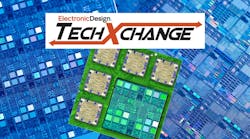Arm Releases First Specification for the Chiplet System Architecture
What you’ll learn:
- Insight into Arm’s CSA endeavors.
- Understanding chiplets and how they function.
- How the newly released standard marks a critical milestone for the technology.
The first public specification of the Chiplet System Architecture (CSA) is now available, revealed in a recent announcement by Arm. It marks the first step toward creating an understanding of how to define and connect chiplets into modular SoCs. By establishing these standards, new chiplet designs can be created, adapted, and reused to build custom SoCs that are able to handle AI workloads in myriad industries.
Over 60 tech companies have signed on to make CSA standards a reality, allowing for faster development and deployment of custom chiplet solutions on Arm’s Compute platform. In other words, it all makes custom chiplet design more accessible for the tech industry and beyond. But what exactly are chiplets, and what can be accomplished utilizing the tech?
What are Chiplets?
Characterized as tiny ICs that provide a subset of functionalities, chiplets are designed to be combined with other chiplets on an interposer (an electrical interface from one socket to another) in a single package to create a complex component, such as a processor. Think of it like each chiplet being part of a processor, where each provides a specific function of the processor as a whole.
A set of chiplets can be combined in a mix-and-match assembly to create different functionalities, like a modular SoC, but with more advantages. For example, the same chiplet can be reused in different devices and be fabricated using different processes, materials, and even nodes, with each providing different capabilities. Chiplets are able to be tested before assembly over traditional silicon, too, which improves wafer yield for final devices, meaning they’re more cost-effective.
Another advantage of the technology includes interoperability. Each tech company is free to design proprietary hardware, but they must adhere to the same plug-and-play standards. That said, the vision of plug-and-play silicon isn’t so easy to implement. It can vary greatly by workload, application, and even packaging type. It can also vary by whether AI is included or how much software is needed to handle a specific workload. However, the interconnects are the glue that holds them together, which is why the release of the first standard is critical to this emerging technology.
>>Check out this TechXchange for similar articles and videos
The interconnects are comprised of a network-on-chip (NoC), which is on the chiplet itself, along with all of the other interconnects that reside within the chiplet. There’s also the UCIe die-to-die connection, which transfers data across the connected chiplets. They work with other high-speed interfaces as well, including bunch of wires (BoW), AIB, OpenHBI, and OIF XSR.
Arm CSA Specification Marks a Milestone
This brings us to the latest news from Arm and why the publicly released Arm CSA specification, albeit in beta form, is a key milestone: It provides a set of system partitioning and chiplet connectivity standards that have been co-developed with the ecosystem across industry leaders.
“The breadth of engagement from these innovative technology companies forms the foundation of an Arm-based chiplet ecosystem set to revolutionize system design, making SoCs more flexible, accessible, and cost-effective while reducing the risk of fragmentation,” stated Arm in its press release. “With a public spec now available, designers have a shared understanding of how to define and connect chiplets into composable SoCs that can address the variance in AI workloads and ensure silicon is fit for specific markets.”
Companies are already working on solutions using the company’s Arm Total Design ecosystem, which offers access to Arm Neoverse CSS, pre-integrated IP and EDA tools, design services, foundry support, as well as commercial software and firmware support. The companies engaging with Arm to create this standard, and those to follow, include ADTechnology, Alphawave Semi, AMI, Cadence, Jaguar Micro, Kalray, Rebellions, Siemens, Synopsys, and more.
As the CSA continues to grow, more companies are expected to collaborate to bring this fledgling tech to fruition, enabling them to innovate and create their own solutions in the coming months and years. For those interested, Arm’s Eddie Ramirez, VP of Infrastructure Business, discussed the role of chiplets in custom silicon for growing AI workloads in a keynote titled Meeting the Challenge of Diverse AI Workloads with Chiplets at the Chiplet Summit.


